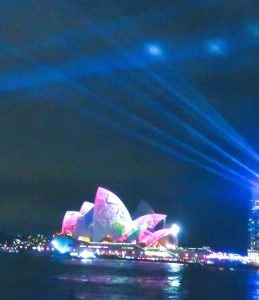I meant to return to answering questions today. Next week. Today I have other things on my mind.
Yesterday, I was caught up in trying to work out why it’s so important to so many people to not let Jews mourn loss. I saw Irish Jews forced to leave a Holocaust Memorial ceremony. I saw people told “What about others who have died?” when they tried to mourn families murdered during the Holocaust. I saw so much more than this that I lost words and avoided writing.
Even political leaders who gave official statements about the Holocaust toned it down this year, left off the dangerous word ‘Jews’ and generally faffed around. Someone on my timeline suggested that we should mourn all lives not focus on specific lives even for one day, and I wondered if it were possible to make all anniversaries about the death of a parent about all parents without hurting those who had lost their parents. We all need time to mourn because we all need to heal when we’re hurt. Each and every one of us at an appropriate time. Not all of us for just one shared minute.
This mood carried over into all kinds of other things. One of them left me incoherent until this morning. Please understand that I am not yet over my incoherence. This may not be the best post I’ve ever done, but my heart is in it.
Someone on social media said, “Think of all the colour, art, theatre, celebration and other cultural value that immigrants and different cultures have brought to Australia. Hmm just remind me what the Jews have brought us, a bit of theatre and film maybe?”
The first Australian opera was written by someone Jewish: Isaac Nathan. The famous story of Fisher’s ghost, the story that led to a Fisher’s ghost festival every single year in the Sydney region… it was written by someone Jewish. The writer who brought English folktales into the international fold and who is still read as the classic purveyor of English folk tales was Jewish and from Australia.
Jewish Australia was such a strong part of Australia’s nineteenth century culture.
We couldn’t stand out and be different very often, because that was not safe. This doesn’t mean that we didn’t contribute. Jews have been part of Australian culture since modern Australia began, just as Jews have lived in Australia since 1788. One of the first free settlers in Australia was a Jewish baby who arrived on the First Fleet, and many of the early arts and early printing in colonial Australia were by Jews or done with Jews.
This particular history shows why some of us create art and celebrate culture that is similar to mainstream culture: religious difference does not imply complete cultural difference.
More than that, though: many Jewish cultural mavens don’t have the same access to the wider community because it’s not safe or because they/we are too Jewish.
Still more, this means is that Jews in Australia are left aside by others who share culture, because of histories past and shameful. Let me give you an example. When I first came to Canberra I met the people in charge at our Polish club and they told me I was welcome to join, since I had ancestors from Bialystock and from around Warsaw and we spoke very similar cultural languages. Then they discovered I was Jewish and they said “We do not accept Jews.” At the cultural festivals in Canberra, there used to be Jewish and Israeli foodstalls and singing and dancing, but these days it’s not safe and very few Jewish culture-bearers from any background are on programs and everyone asks me “Why don’t we have a Jewish food fair any more?” The food fair is a specific thing. It covered many different Jewish food cultures, and was a delight. It was run to make money for children’s education, but the insurance premiums the Jewish community had to pay were so high after the Molotov cocktails 20+ years ago, that the community would not only not raise money with a food fair… it would go into debt.
One of the wonders of modern Australian history is the great change that made us a nation with so many writers and musicians and actors and… an immensely artistic country. This development of the arts into something of international note (including that enviable coffee culture) was spearheaded by Holocaust survivors. And yet there is not Jewish contribution to culture and the arts?
When I was in my teens I asked many Shoah survivors, including writers, “Why Melbourne? What made you choose to come to Melbourne?” I was told they wanted to get as far from Europe as they could. These people were mostly honorary aunties and uncles who went to school, university or shared a social group with one of my parents.
We were the older Australian Jews. They still shared their art with the rest of Australia. Much of Australia simply pretended my branch of Australian Jewish weren’t Jewish at all, or were pretenders, or did not have and specific cultural background they presented. My father’s first cousin, Linda, has had any indication of her Jewishness removed from her Wikipedia page, except for the title of one of her most popular song series.
We are not really permitted to show off the folk culture or the national culture the way other Australians are able.
There is the bigotry, which I’ve mentioned. Add to this the need to be safe, which is related to the bigotry.
There is another related factor. Many non-Jewish Australians pretend we don’t exist. This is why almost no-one in Australia knows who the author is of the first Australian Jewish fantasy novel. How do I know almost no-one knows? Because I am that author.
Another aspect is whether others who share our ancestral cultures are willing to share. The Polish Club fits in here. Just as the Polish club did not want me, few mainstream Australian culture experts see Jewish Australian writers unless we write about the Holocaust, about rebellion against Ultra-Orthodoxy… in other words, unless we create what they feel we ought to create. Our own culture is far less important than their view of it.
Also, for some of us, our culture is Anglo-Australia. My cultural foodways include challah and lamingtons and meat pies. We’re entirely allowed to publicly celebrate the lamingtons and meat pies, but most Australians don’t see how challah fits into the picture.
Add to all this that we can’t appear too different and still be safe. There are days and times I cannot walk in a given place and guarantee my safety. When I’m in Melbourne on a day where pro-Palestinians march, I cannot use the State Library without walking around the long, long way and entering by the back, for instance. I cannot walk that far, so I cannot use the State Library on those days.
Jews in Australia have never been permitted to be too different from majority culture and so we have our own culture, that is similar to that of the majority. This doesn’t mean we bring nothing, because our ancestors were part of that majority culture before we even came to Australia. It means that some people look and don’t see something they think of as distinctive or exotic and so think we have brought nothing. Take Jewish composers out of Australian history and the whole modern development of international level music would be jeopardised. The folk music scene in Melbourne would lose its best violinist. Dame Edna Everage would not have worn those glasses. Eliot Goblet and John Safran and Elle McFeast would not be part of our world. There is so much culture Australia would not have.
We cannot appear too different in public. I can be publicly Jewish because I have an Anglo-Australian culture, but local bookshops do not stock my books – not even the ones used in universities in the US and Germany – and I am not sufficiently distinctively Jewish because when anyone assesses Jewish culture in Australia, the whole of the Anglo side of things tends to be ignored. This is why I wrote The Wizardry of Jewish Women – I am trying to redress that balance.
Let me ask that question from social media again:
“Think of all the colour, art, theatre, celebration and other cultural value that immigrants and different cultures have brought to Australia. Hmm just remind me what the Jews have brought us, a bit of theatre and film maybe?”
What does most of Australia bring to understanding and even encouraging Jewish Australian cultures? Not much at all. It’s not a lack of culture. It’s a lack of knowledge and a lack of community.
Update: I always tangle certain writers. There was more than one John Lang. The one who wrote Fisher’s Ghost was Australian-born, and famous for it. He was not the brother of Andrew Lang, of the many-coloured fairy books. The Fisher’s Ghost Lang’s maternal grandfather was one of the Jews who arrived here on the First Fleet, so Lang himself was not actually Jewish. I always, always get the many Langs confused. I wrote articles to make sure I didn’t, but I still do. John Lang still fits here, but as someone with Jewish heritage, not as a practising Jew.


 I don’t think of myself as a crafter, but I do do a lot of craft-like things. Maybe I should rethink?
I don’t think of myself as a crafter, but I do do a lot of craft-like things. Maybe I should rethink?
